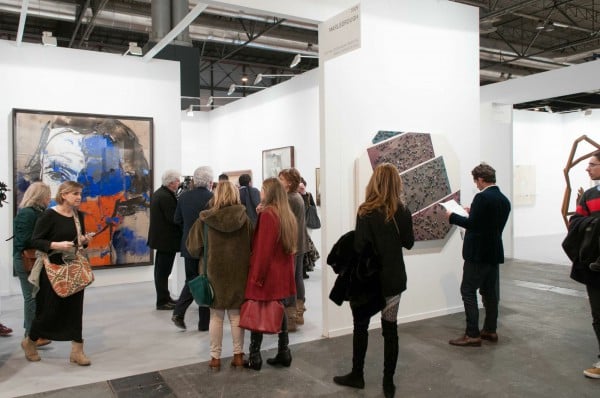Art Fairs
Spanish Art Market Can’t Shake the Recession
Meager growth and lacking auction infrastructure make for negligible industry output.

Meager growth and lacking auction infrastructure make for negligible industry output.

by
Lorena Muñoz-Alonso

According to a report, commissioned by the Fundación Arte y Mecenazgo (Art and Patronage Foundation), the Spanish art market experienced growth of three percent in 2013.
The figure might seem underwhelming, but it is still a welcome sign of growth for an art market that continues to lag in sixth place within the EU, behind the UK, France, Germany, Italy, and Austria.
In fact, 2013 marks the third consecutive year of growth since the economic collapse of 2008. The crisis has since turned the precarious Spanish art market into a battleground, where a penchant for blaming the recession and cuts in government funding sometimes appears to be camouflaging a lack of clear direction and entrepreneurial vision.
Last Wednesday during a press conference, the author of the report, Clare McAndrew, broke down the numbers and revealed some interesting findings. For example, 58 percent of all Spanish art transactions in 2013 took place in galleries, 18 percent in international art fairs, 17 percent in national art fairs, two percent in auctions, and one percent online.
The study, which looked at the Spanish art market between 2003 and 2013, reveals that the strongest years for art sales in that period were 2006 (with €480 million) and 2007 (with €481 million), just before the 2008 meltdown. In the whole of 2013, 325,875 art works were sold for a total industry output of €336 million. That’s not even half the amount the Christie’s New York harvested in just one evening last week, during its postwar and contemporary art auction (see “Epic Christie’s $852.9 Million Blockbuster Contemporary Art Sale Is the Highest Ever”).
Operating Within a Low Price Range
This figure reveals a crucial fact: that the Spanish market mostly operates within a low price range. Sixty-eight percent of the works sold in 2013 cost less than €3,000. In the UK market, for example, only 10 percent of sales corresponded to works within that range. Moreover, McAndrew revealed that 99 percent of all transactions in 2013 in Spain were for works worth less than €50,000.
Spanish collectors seem particularly keen on fostering local talent when buying art. According to McAndrew’s study, two-thirds of the works sold last year in the country were by Spanish artists. Of these, the most expensive still are, unsurprisingly, the big stars of the 20th century avant-garde, namely Pablo Picasso, Joan Miró, Juan Gris, Salvador Dalí, and Eduardo Chillida. These five artists also make up a staggering 87 percent of all international sales of Spanish artists.
But, despite the enduring prowess of these Modern icons, it was a Spanish Old Master painter who triumphed in the national art market last year. The most expensive artwork that changed hands in Spain in 2013 was a painting by Juan van der Hamen y León (1596-1631), sold at auction for €415,000.